SOLAR
KNOWLEDGE IS POWER
SOLAR
KNOWLEDGE IS POWER
SOLAR ENERGY
SOLAR ENERGY
Why solar energy?
Sun is infinite source of energy, is our final destination in journey of exploring energy source. Harvesting ecofriendly solar energy in economical way is the ultimate answer to fulfill our energy needs creating a green future.
How it works?
Solar energy is traditional form of energy being harvested by our ancestors in one or the other form. Solar energy can directly use in form of light heat or can be converted to electricity. The solar energy is absolutely free we just need to find the system that converts it to usable form. The Solar PV silicon cells convert the solar light energy directly into electric power in DC form. With rapid advancement in technology and large-scale production the cost of solar PV system in recent years is falling is fast way making solar energy more affordable and viable.
How can you generate power?
To be a solar energy producer all you just need is space to install a solar PV system with sufficient solar radiation which may be land, unutilized building roof top area, parking roofs, water bodies, etc. You can generate your own power in presence of light.
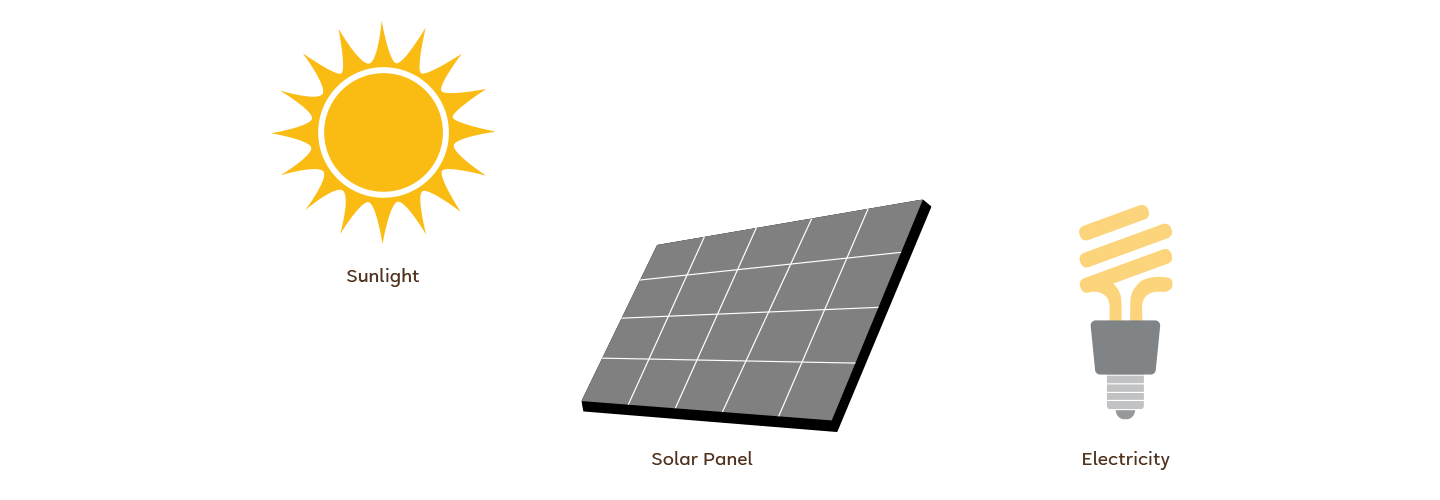
Why Roof to Solar?
The grid electricity cost keeps raising over period. Electricity costs grew at rate of 4% every year in last decade and expected to increase even higher in future. Solar Rooftop systems make effective use of your empty rooftop space to generate electricity. The roof to solar system can cater to 40 - 100% of your power requirements depending on the roof size. The system enables onsite power generation, eliminating transmission and distribution costs. It also makes efficient use of energy owing to negligible losses in transmission. Rooftop Systems require little maintenance due to absence of moving parts in the system and have a long operating life of 25 years.
Govt. has launched the Rooftop Solar Subsidy programme through which residential customers can install rooftop solar system on their premises and avail subsidy up to 40%. Residential, Commercial and Industrial customers can install roof top solar and reduce energy bills.
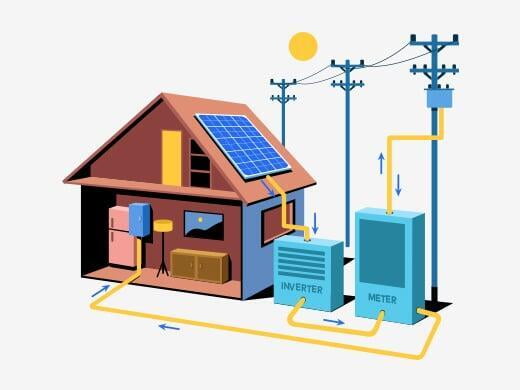
“EMI Bill Lower Than The Electricity Bill”
“EMI Bill Lower Than The Electricity Bill”
Components Of Solar Power System
Solar system mainly consists of Solar PV panels, Panel Mounting structures, Inverter, distribution boards, connected cable, earthing accessories with or without battery for storage.
Solar PV converts sunlight into DC power. Inverter converts DC power into AC for usage. The panel mounting structure may be Galvanized Iron, Aluminum as per the requirement of site. The cables and distribution facilitate interconnections. Power earthing and surge diverter for safety.
Solar System Configurations
Solar power systems come in three variants; on-grid, off-grid, and hybrid system.
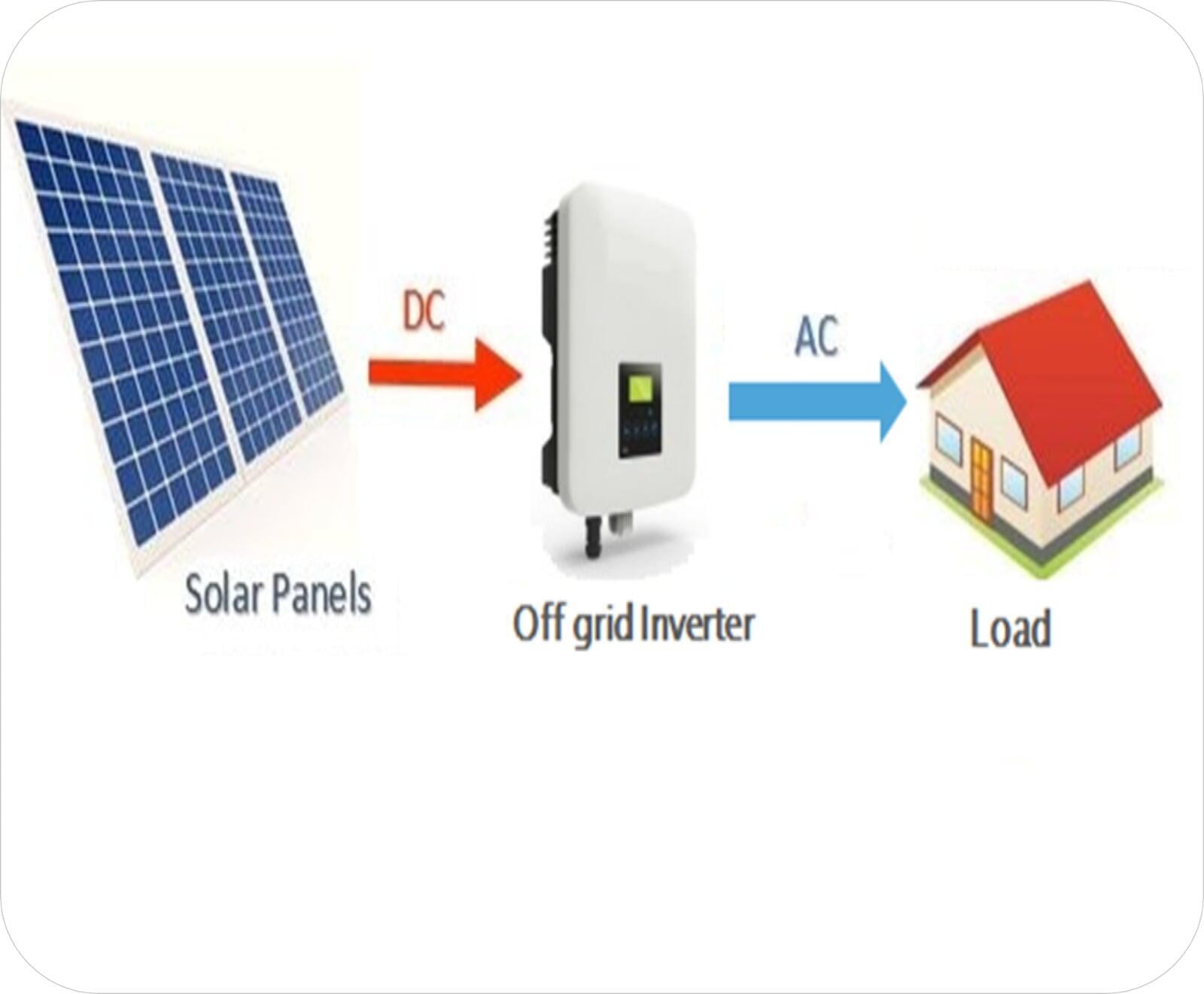
Off Grid Inverter
Off Grid Inverter
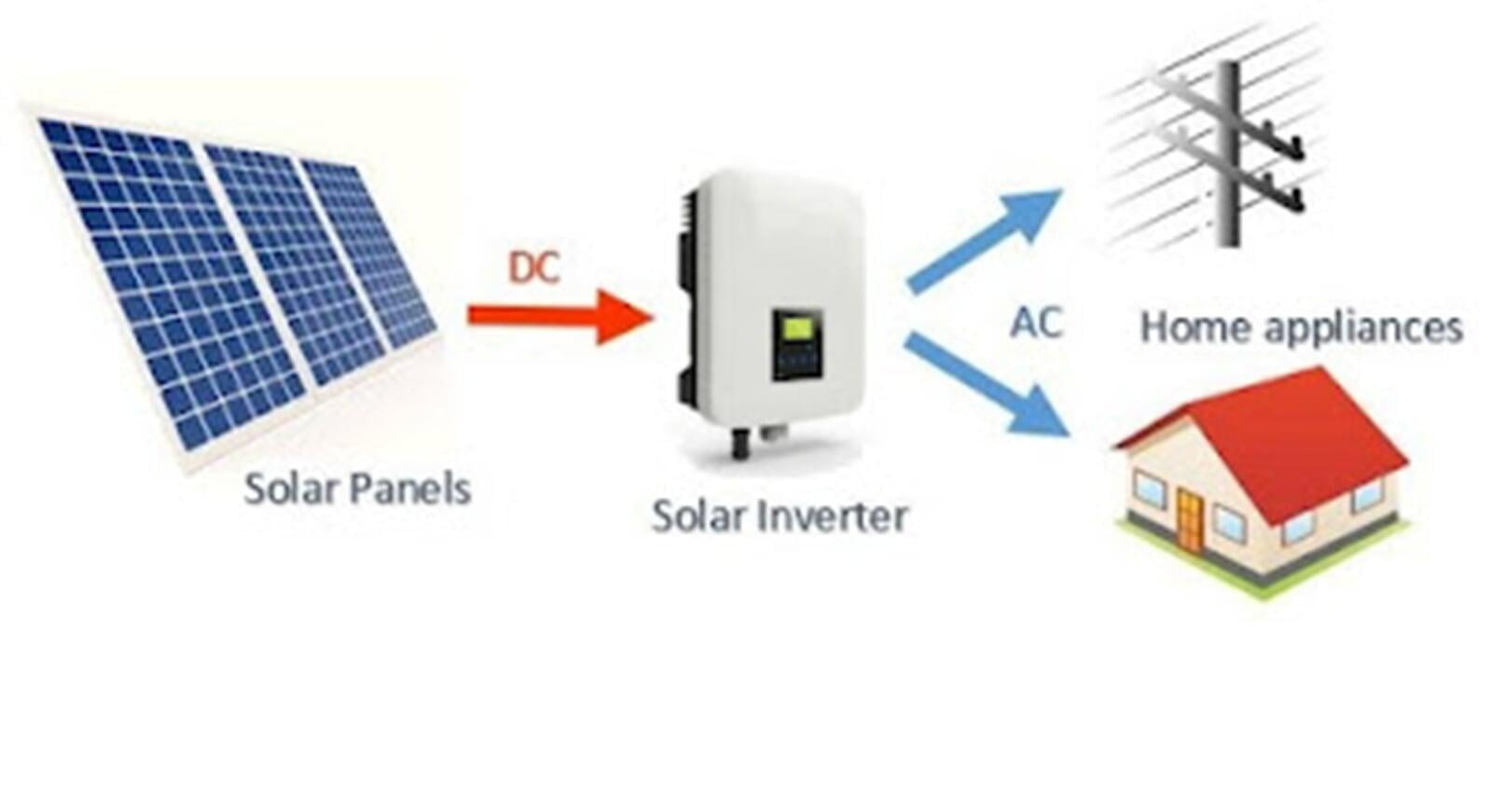
Grid tied
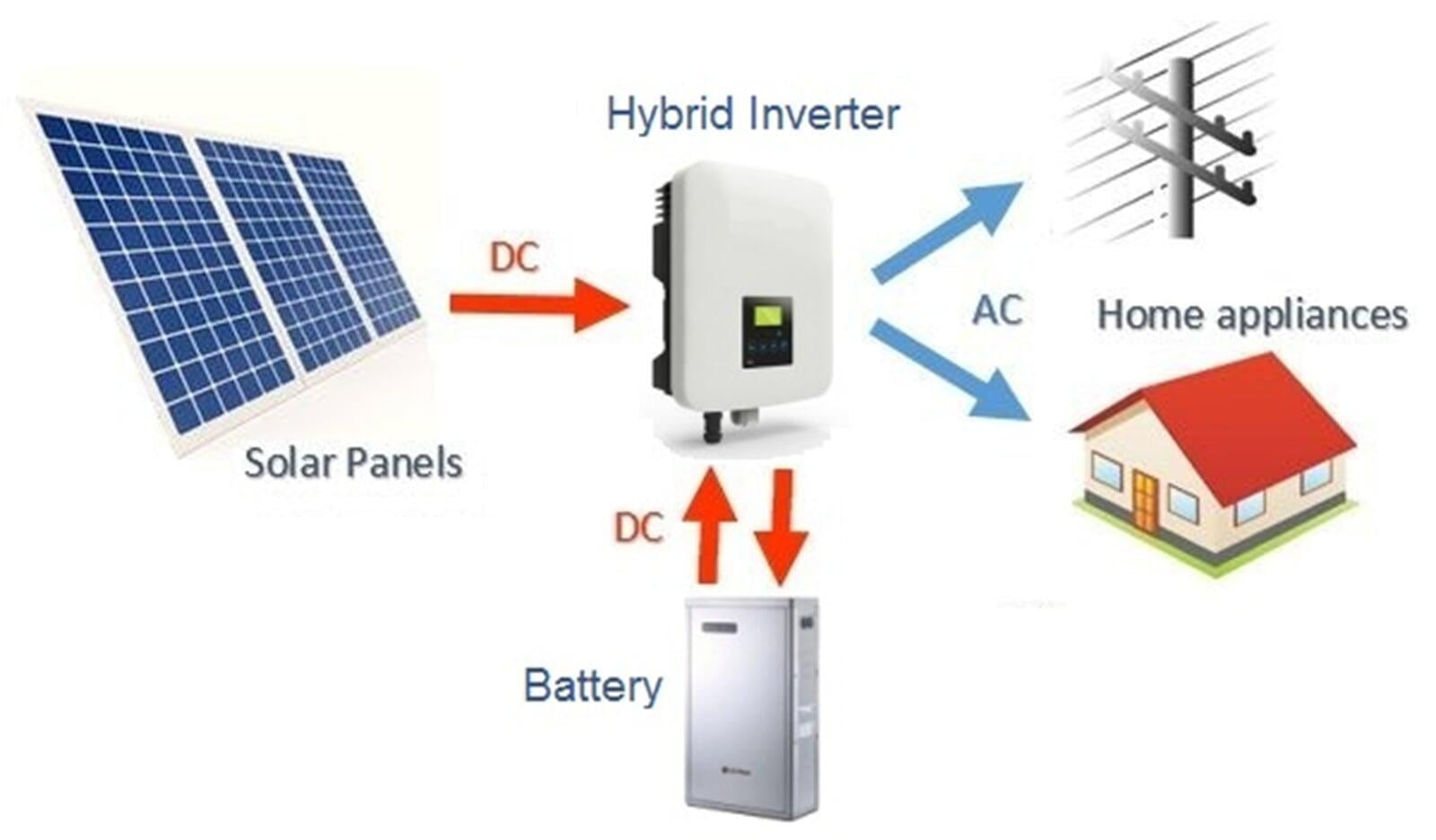
Hybrid Inverter
Hybrid Inverter
Off Grid
Standalone or Off-Grid Solar Systems are installed in situations where mains power is not available, or the user wants to become completely independent of the grid. All power is generated by the solar panels; a battery bank stores excess power for use at night or when the sun is not shining. Disadvantage: As an off grid solar system requires more solar panels, a larger inverter, larger storage/ and in some cases even a generator, they are often double the price of a grid-tied system. Without storage system the energy that could be generated during no load period would be waste (No net metering)
In places where the grid availability is zero or where there are high instances of a power cut, Off-grid systems are an apt solution for relief from power cuts and they can be installed with a standalone inverter with a separate or integrated charge controller.
On Grid
A Solar PV (Photo Voltaic) system which is connected to the grid through grid tied inverter where the system can potentially send power back to the grid as well. These systems are also called grid-tied systems.
During solar hours the power generated is utilized and excess power is exported to the grid. The system can be without battery storage as power can be drawn from grid when no generation from solar. The energy generated, exported and imported will be net metered. The disadvantage of grid tied inverter system is it does not generate power when grid power is cut. A grid is required since the inverter needs to be provided a reference voltage and the inverter needs to sync with the grid in order to export energy back into the grid. On-grid systems make sense for locations with no daytime power cut or with less than 2 hrs of a daytime power cut.
Hybrid System
A hybrid solar system has the good features of both on-grid and off-grid solar systems, minus their flaws. The hybrid solar system is connected to the grid via net metering and also has a battery backup to store the power. The energy that solar panels collect goes through a hybrid solar inverter to generate electricity.
The most important benefit of a hybrid solar system is the power backup facility. It means you can continue using electricity without disruptions even during power outages. A battery backup helps store the extra power generated by the solar system during peak hours. The panels generate electricity and storing the excess energy in the batteries. If any extra energy remains after using the required power, the excess power is sent to the grid via net metering. This is great way of replacing polluting diesel generators. Your electricity bill will be reduced, and your diesel bill will be eliminated.
Advantages
This provides an uninterrupted power supply even during a power outage.
Ensures the maximum use of solar energy; thus, saving a lot on your electricity bills.
High cost of battery often comes as issue.
Disadvantages
Payback time is more.
Installation cost is high.
More space required to install entire system.
Solar PV Mountings
Solar PV Mountings
Roof Top
In rooftop PV system Solar PV panels are mounted on the rooftop of a residential or commercial building or structure. In case of RCC roof the Panels are mounted on The Galvanized iron structures with tilt angle as per geographical location. On Sheet roof the solar panels are usually mounted on Aluminum structure to reduce weight on roof. Rooftop mounted systems are small compared to utility-scale/ ground-mounted solar.
Govt. has launched the Rooftop Solar Subsidy programme through which residential customers can install rooftop solar system on their premises and avail subsidy up to 40%. Residential, Commercial and Industrial customers can install roof top solar with net meter facility and reduce energy bills.
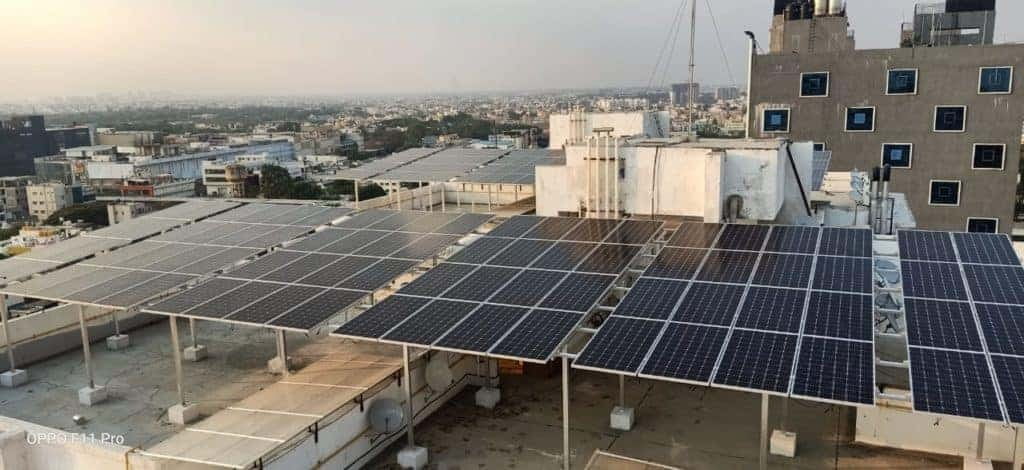
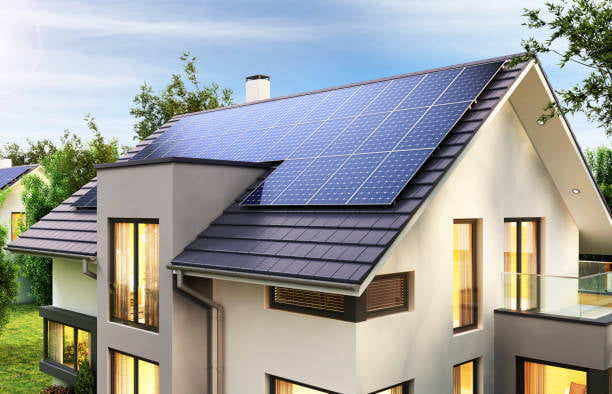
Solar PV Mountings
Solar PV Mountings
Ground Mount
In Ground mount solar PV panels are mounted on metal structures on ground with or without tracking system. Ground mount solar plants are generally of large/Utility scale plants or small plants where roof top area is not feasible. The cost of ground mount system is usually higher compared to roof top mounting. The efficiency of ground mount system are high due to optimization of tilt angle/Tracking.
- For large systems (over 100kw)
- With limited roof space
- Your roof is poorly orientated
- For rural or regional areas
- There is shading on roof from.
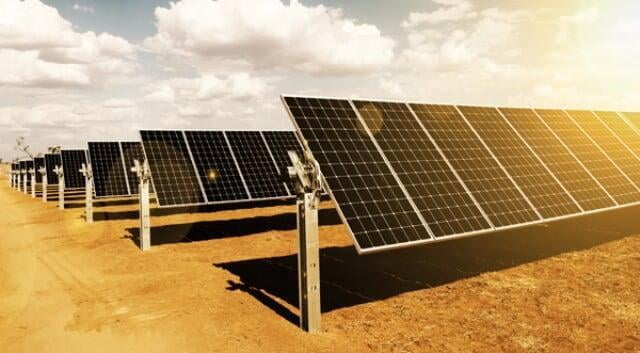
Floating Solar
In Floa tovoltaics, floating solar plants, the solar panels are mounted on the structure that floats on a body of water, typically a reservoir or a lake, irrigation canals. The advantage of this system is that it doesn’t make use of land thus enabling land to be utilized for agriculture/constructions etc. The performance of PV panels is higher due to cooling effect of water also aid in reducing the water evaporation loss. Suitable where water bodies are nearer to the grid connectivity/Load.
Advantages
- No need of Land acquisition/deforestation
- Water cooling improves performance of solar PV
- Reduces the evaporation losses
- Less maintenance due to non-dust surrounding
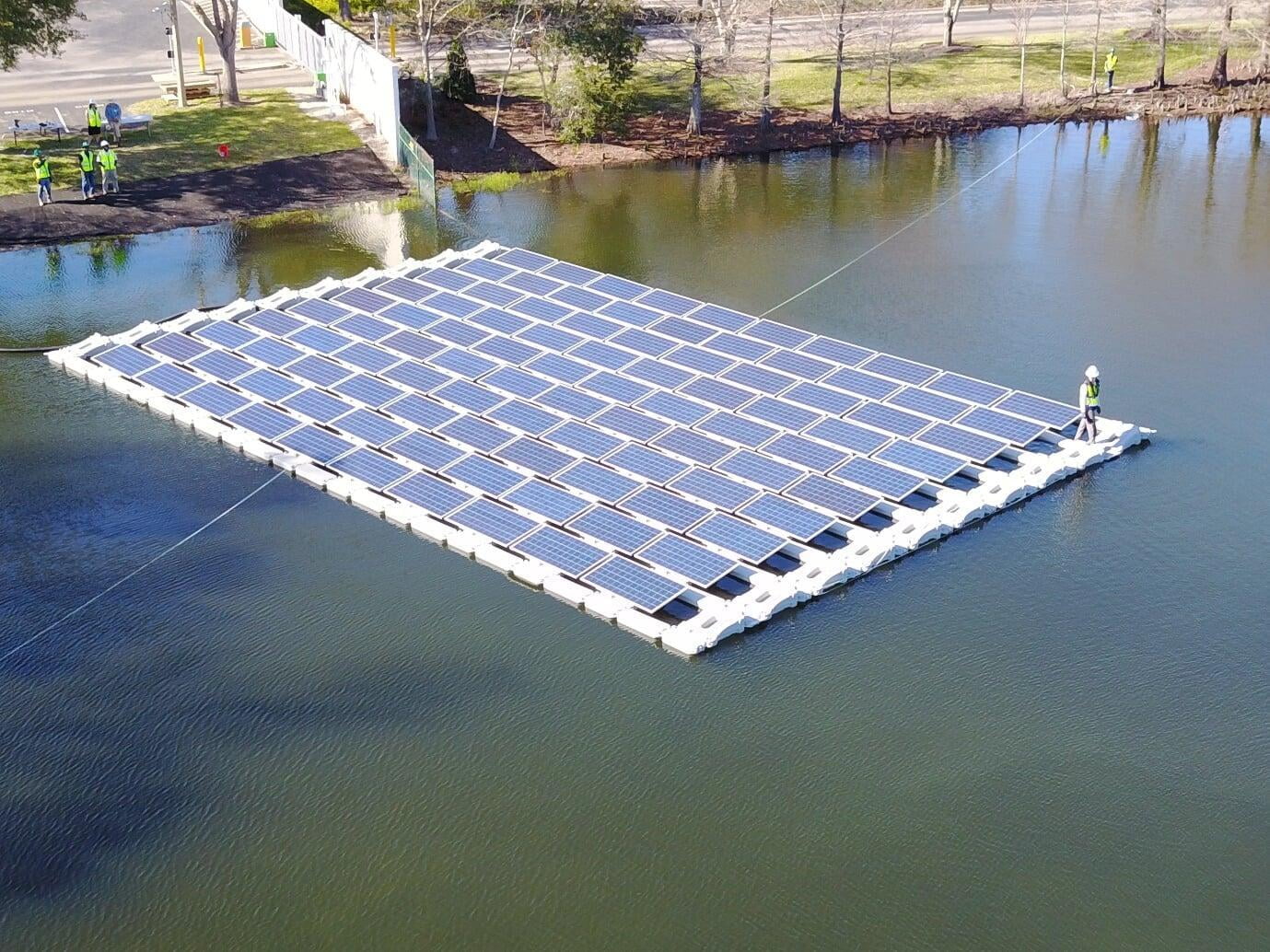
Subsidy Scheme
Subsidy Scheme
Roof top residential
The Central Govt. (MNRE-GoI) has launched the grid connected solar roof top scheme, for residential customers (Individual / Group housing societies/ Apartments) through which customer can install solar rooftop system on their premises and avail the subsidy (or Central Financial Assistance – CFA) directly from the Central Government. To facilitate this scheme, Government has developed online Portal for the registration of applications. The whole process from submission of application to the release of subsidy/CFA would be implemented in online mode through this portal.
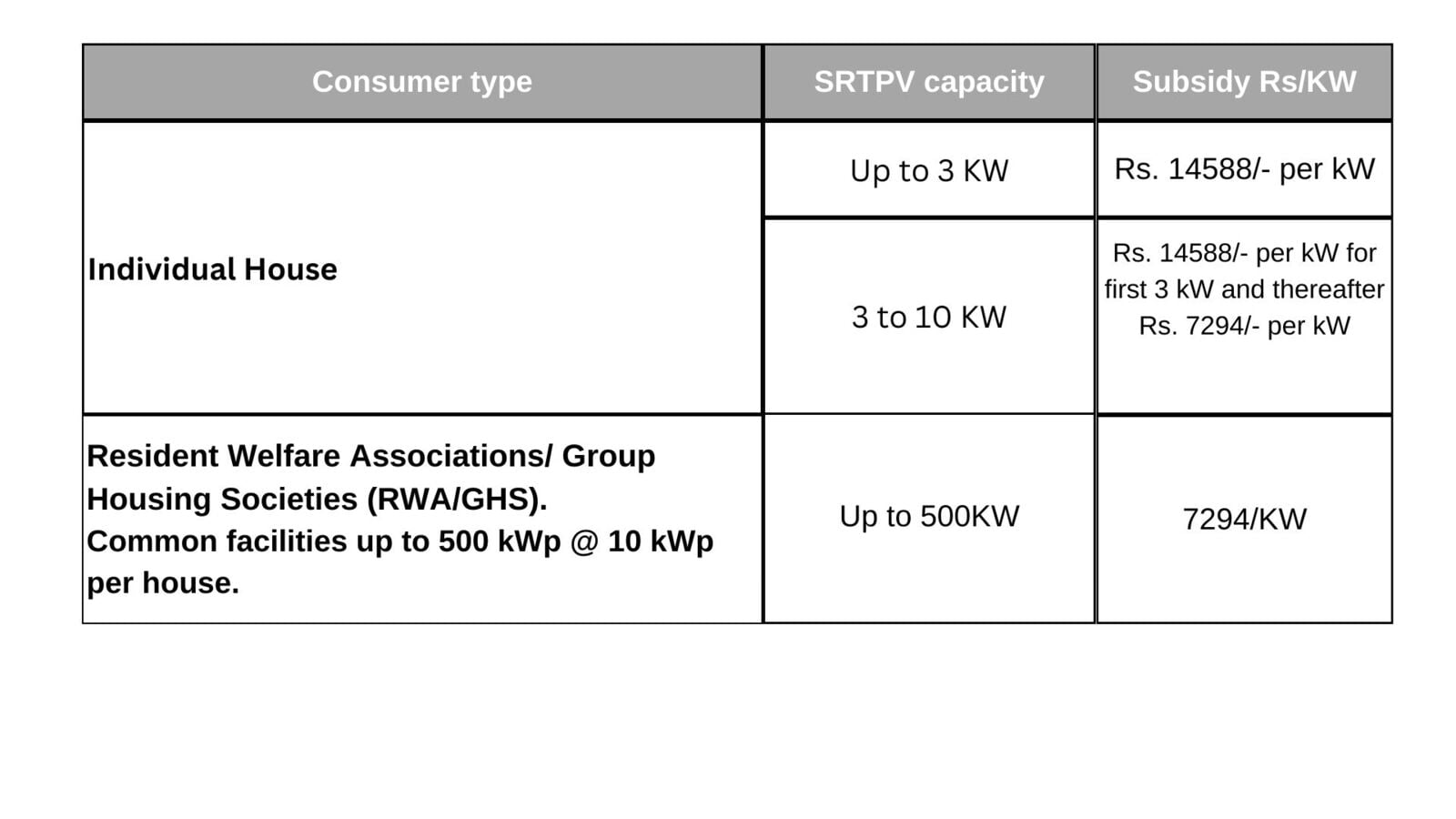
Subsidy
Validity of CFA/Subsidy Rates
The CFA/subsidy indicated above will be applicable for all applications registered on the National Portal till further notice and will be released after clearance by inspecting authority (DISCOM) on successful commissioning and installation of metering system as per specified procedure.
Eligibility Criterion
CFA/subsidy would be applicable only for those projects which have implemented fully through the National Portal after the date of launch (30.07.2022) i.e., application made on National Portal on/after 30.07.2022 and processed for technical feasibility approval & installation of RTS plant by registered vendor thereafter, as per the provision of National Portal/ simplified procedure. The plant capacity eligible for CFA/subsidy would be calculated after factoring in the capacity already installed at the site. The applications on the National Portal shall be submitted by the concerned consumer/beneficiary only and the application submitted by vendors are liable to be rejected. Further, MNRE may take punitive action against such vendors including blacklisting and/or debarment from further participation in the program.
Mandatory Conditions
For availing CFA/subsidy through the National Portal, it is essential to install the rooftop solar plant through registered vendors of the concerned DISCOM and as per the guidelines and technical specifications issued by MNRE. In addition, only indigenously manufactured solar panels/modules (both solar cells and modules shall be made in India) shall be used for installation of the rooftop solar plant. Calculation of CFA/subsidy: The CFA/subsidy would be calculated on the basis of total solar module capacity/solar inverter capacity/capacity approved by DISCOM, whichever is lower.
Disclaimer:
Mere submission of claims on the National Portal would not entitle an applicant to receive CFA/subsidy. The compliance of complete process/guidelines issued by MNRE is mandatory to avail CFA subsidy. Submission of false claims on the National Portal, or using forged/false documents to avail CFA, would be viewed seriously and strict action would be taken against the concerned as per the provisions of prevailing Acts, rules and regulations.
For more details visit: https://srtpv.bescom.org/
Solar Pumps Subsidy
Solar Pumps Subsidy
Ministry of New and Renewable Energy (MNRE) has launched the PM-KUSUM Scheme for farmers to install solar Agriculture pumps with CFA of 30%, State Government subsidy of at-least 30%, and only remaining 40% cost by the farmer. Bank finance can be availed by farmer, so that farmer has to initially pay only 10% of the cost and remaining up to 30% of the cost as loan. We take up the solar pumps EPC on turnkey basis and obtain regulatory approvals.
PM-KUSUM( Pradhan Mantri Kisan Urja Suraksha evam Uttam Mahabhiyan)
Scheme is aimed at ensuring energy security for farmers in India, along with honoring India’s commitment to increase the share of installed capacity of electric power from non-fossil-fuel sources to 40% by 2030 as part of Intended Nationally Determined Contributions (INDCs).
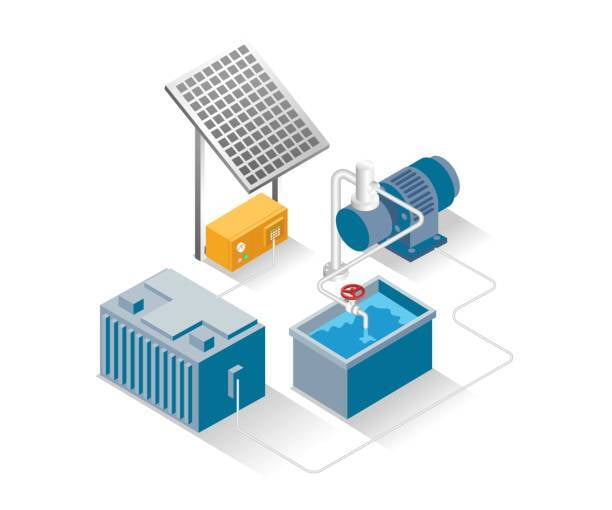
Components of scheme
The PM-KUSUM Scheme was launched in 2019 with 3 components:
Component - A
For Setting up of 10,000 MW of Decentralized Grid Connected Renewable Energy Power Plants on barren land. Under this component, renewable energy-based power plants (REPP) of capacity 500 kW to 2 MW will be setup by individual farmers/ group of farmers/ cooperatives/ panchayats/ Farmer Producer Organizations (FPO)/Water User associations (WUA) on barren/fallow land. These power plants can also be installed on cultivable land on stilts where crops can also be grown below the solar panels. The renewable energy power project will be installed within five km radius of the sub-stations in order to avoid high cost of sub-transmission lines and to reduce transmission losses. The power generated will be purchased by local DISCOM at pre-fixed tariffenergy-based power plants (REPP) of capacity 500 kW to 2 MW will be setup by individual farmers/ group of farmers/ cooperatives/ panchayats/ Farmer Producer Organizations (FPO)/Water User associations (WUA) on barren/fallow land. These power plants can also be installed on cultivable land on stilts where crops can also be grown below the solar panels. The renewable energy power project will be installed within five km radius of the sub-stations in order to avoid high cost of sub-transmission lines and to reduce transmission losses. The power generated will be purchased by local DISCOM at pre-fixed tariff.
Component-B
For Installation of 17.50 Lakh stand-alone solar agriculture pumps. Under this Component, individual farmers will be supported to install standalone solar Agriculture pumps of capacity up to 7.5 HP for replacement of existing diesel Agriculture pumps / irrigation systems in off-grid areas, where grid supply is not available. Pumps of capacity higher than 7.5 HP can also be installed, however, the financial support will be limited to 7.5 HP capacity.
Component-C
For Solarization of 10 Lakh Grid Connected Agriculture Pumps. Under this Component, individual farmers having grid connected agriculture pump will be supported to solarize pumps. The farmer will be able to use the generated solar power to meet the irrigation needs and the excess solar power will be sold to DISCOMs at pre-fixed tariff.
CENTRAL FINANCIAL ASSISTANCE (CFA)/ STATE GOVERNMENT SUPPORT
Component-A
Procurement Based Incentive (PBI) @ 40 paise/kWh or Rs. 6.60 lakhs/MW/year, whichever is less, will be provided for the first five years by MNRE to DISCOMs, for buying the power from farmers/developers.
Component-B & C
CFA of 30% of the benchmark cost or the tender cost, whichever is lower. State Government subsidy 30%; Remaining 40% by the farmer.
In Northeastern States, Sikkim, J&K, Himachal, Uttarakhand, Lakshadweep and A&N Islands, CFA of 50%, State Government subsidy 30%, Remaining 20% by the farmer.
Visit for more detail: https://pmkusum.mnre.gov.in
Industrial Roof top Solar
Rooftop solar is Most viable for C&I with huge energy demand and high energy tariff. Govt. has launched the Rooftop Solar Subsidy programme through which Commercial & Industrial customers can install rooftop solar system on their premises with GST Input, Saving Tax with Accelerated depreciation benefit.
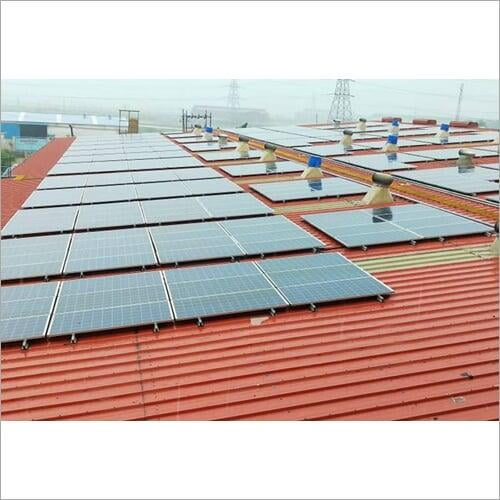
- Huge Saving in electricity bill
- Tax savings –Claim accelerated depreciation of 40% in first year, 40% in second year and 20 % in third year 30% of your solar power Plant cost is recovers from tax savings
- No worries on increase in electricity tariff
- Investment recovered within 2.5-3 years’ time
- Invest ones and enjoy the benefits for 27 years
Open Access Power
To put it simply, Open Access solar power is an arrangement in which a power producer builds a solar power plant on a suitable site and contracts a medium/ long-term power purchase agreement (PPA) with a consumer.
If you are a business that uses solar energy, there are two options for generating solar energy.
(1) Solar power plant on-site (which might be on a rooftop, ground mount or carport solar installation), and,
(2) Open Access solar power (wherein consumption of solar power is managed through the grid).
It is interesting to know how Open Access solar power works. Usually, a state develops solar farms to generate solar power, typically in a rural area where land is freely available, and then the generated solar power is fed into the state’s electricity grid. From there, the energy will then be distributed to large users in the state using the existing grid infrastructure. Any commercial establishment like a factory, a hospital, a star hotel, an IT park, or anyone with a minimum contract requirement of 1000 kVA might be the power consumption. Open Access is classified broadly into two categories.
It mainly depends on the location of the consumer and producer.
Intra-State Open Access
In this case, both the customer and the electricity producer are from the same state and must abide by the rules of the State Electricity Regulatory Commission (SERC). Intra-State Open Access Arrangement, where both the power-producing solar farm and the consumer are in the same state, has been a notable element of open access in solar. These intra-state agreements take use of various state governments’ exceptions and waivers, resulting in enhanced cost savings for the consumer. As a result, the net landed price to the consumer is lower than the price of power obtained from traditional power sources.
Inter-State Open Access
In this case, the customer and electricity producer both are from separate states and must adhere to central laws specific to this situation In the Open Access solar power, a Solar Power Purchase Agreement (PPA) is signed between the consumer and the power producer. It is the main governing contract for solar power through open access and it is done usually for a long term (10 years or more). For the duration of the PPA, the power producer agrees to supply a certain number of units every year at a certain tariff. Taxes and open-access fees are levied under state regulations.
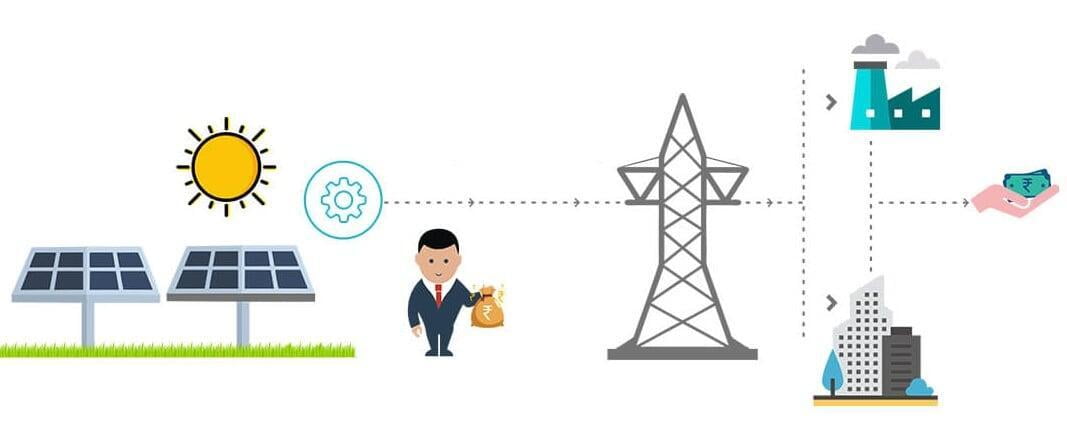
Open Access allows large power customers with more than 1 MW of linked load to acquire power directly from power suppliers at a lower price (open market). Traditional consumers, on the other hand, have no choice but to use the AREA DISCOM for electricity and have no control over the tariff. The Electricity Act of 2003 allowed consumers with more than 1 MW of sanctioned load to purchase electricity directly from power providers, pay certain tariffs and taxes, and lower their power costs. Today, India has a large network of private offsite open access renewable energy farms across India, through which they supply large corporates clean energy as per their requirements.
There are 3 models of Open Access to procure low-cost renewable energy:
Captive Open Access
In the captive capex model, the corporate buyer makes the 100% upfront capital investment. The buyer owns the power generating asset and the solar generated power is used for the buyer’s consumption. Renewable developer constructs the plant, operates and maintains it over its lifetime. Key benefits are Hedge against electricity charges, tax benefits and no technical experience needed from a consumer’s end. In this model, Open Access charges from the grid are applicable, but charges such as cross-subsidy surcharge and additional surcharge are waived off.
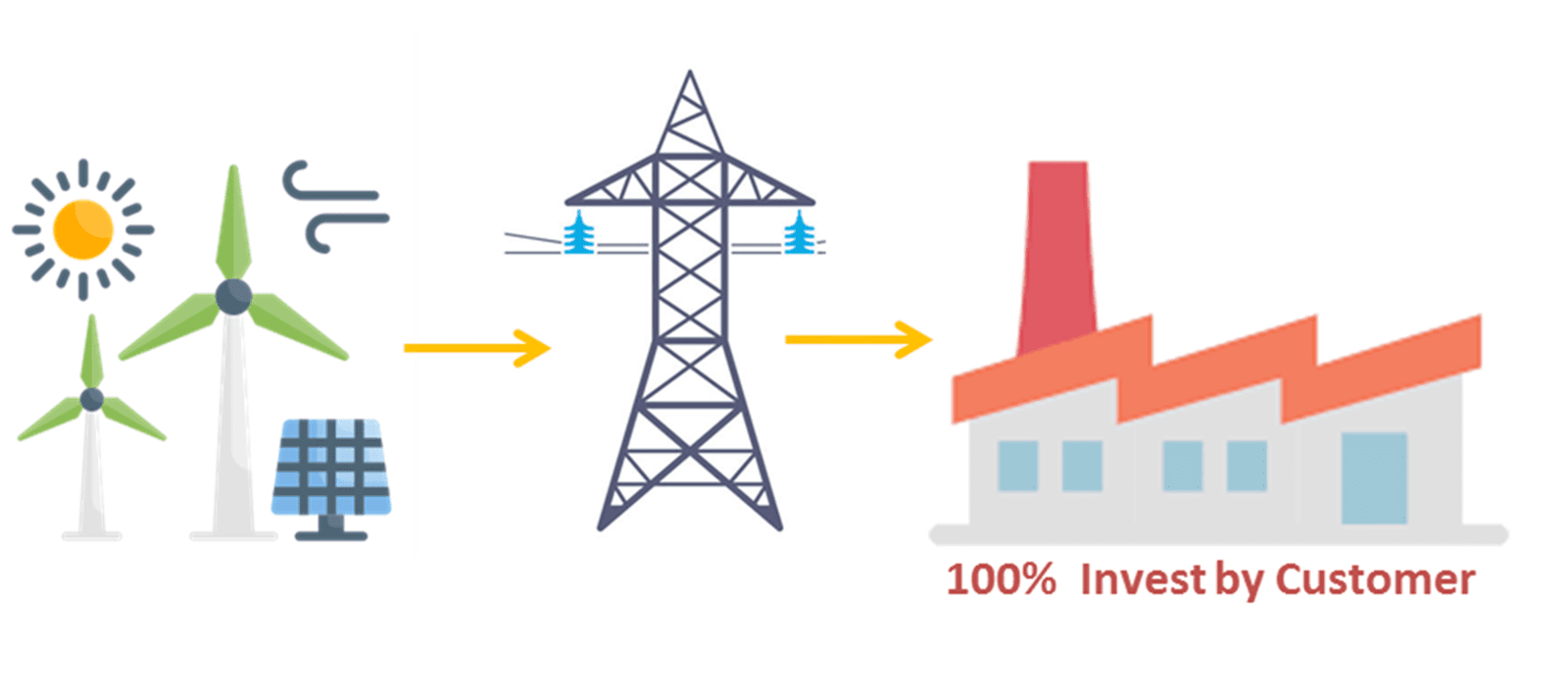
Group captive Open Access
Group captive model is a variant of captive model. Under this model, a project is developed for collective use of one or many corporate buyers. In this model, buyer(s) hold(s) 26% equity whereas investor bears 74% of the investment. Key benefits are minimum investment and risk, savings on electricity and no technical experience needed from a consumer’s end. In this model also, Open Access charges from the grid are applicable, but charges such as cross-subsidy surcharge and additional surcharge are waived off.
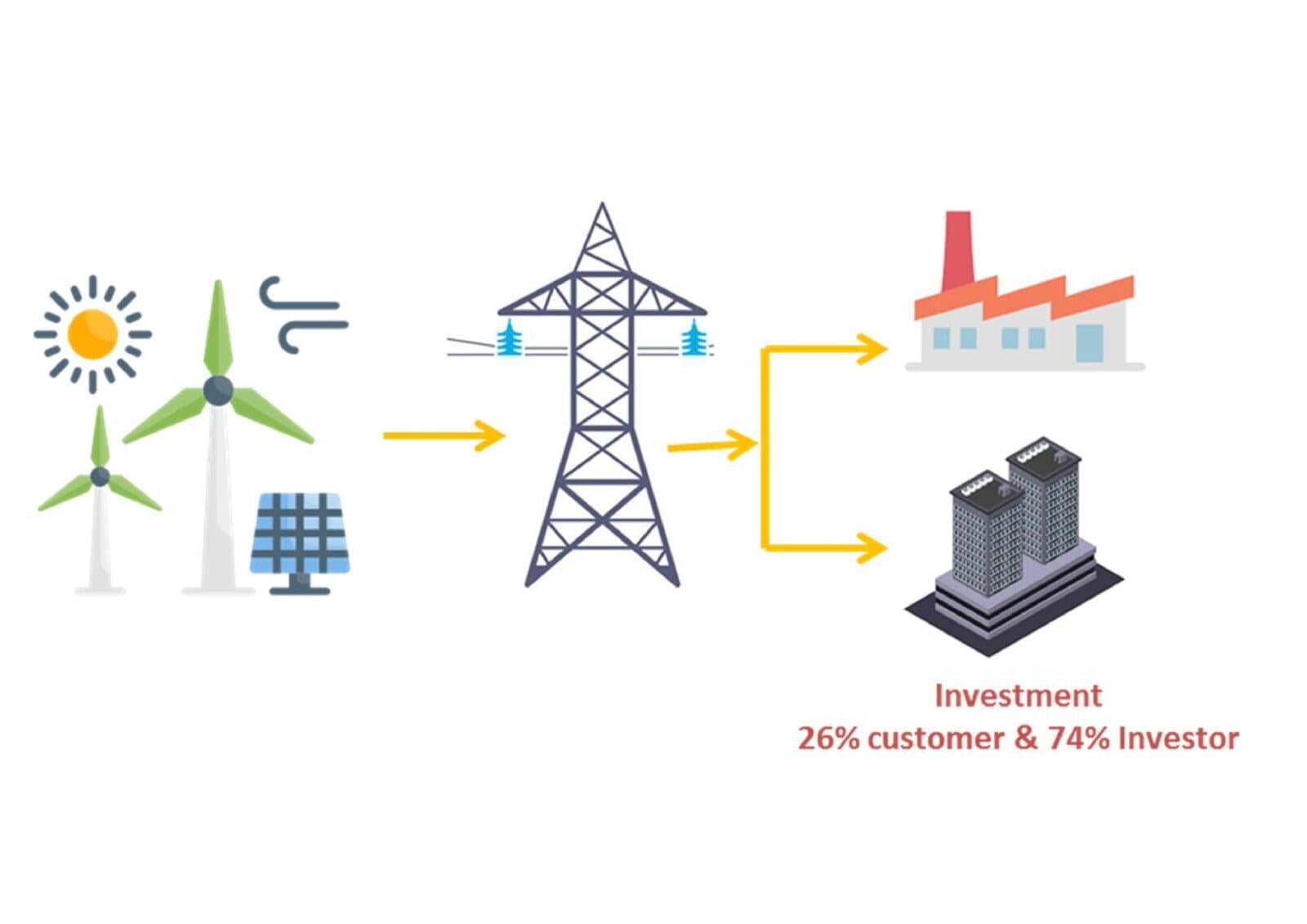
Third party Open Access
Most of the businesses today strive energy from green sources. Rooftop ground mount solar being the best ways to start but many corporates don’t have sufficient spaces. Under this model, green power can be purchased through open access. Moreover, this model allows consumers to overcome the limitations of onsite solar installation, as it is a scalable option which is not constrained by availability of space at the consumer’s facility. With open access power, consumers can begin to access affordable clean energy from day one. For corporate businesses, open access power helps in regular supply at lower tariff with reducing their carbon foot print. Key benefits of this model are zero upfront investment, guaranteed savings on electricity cost, a risk-free solution and tariff certainty for next 20- 25 years because of PPA. Cross-subsidy surcharge and additional surcharges are not waived off in this model.
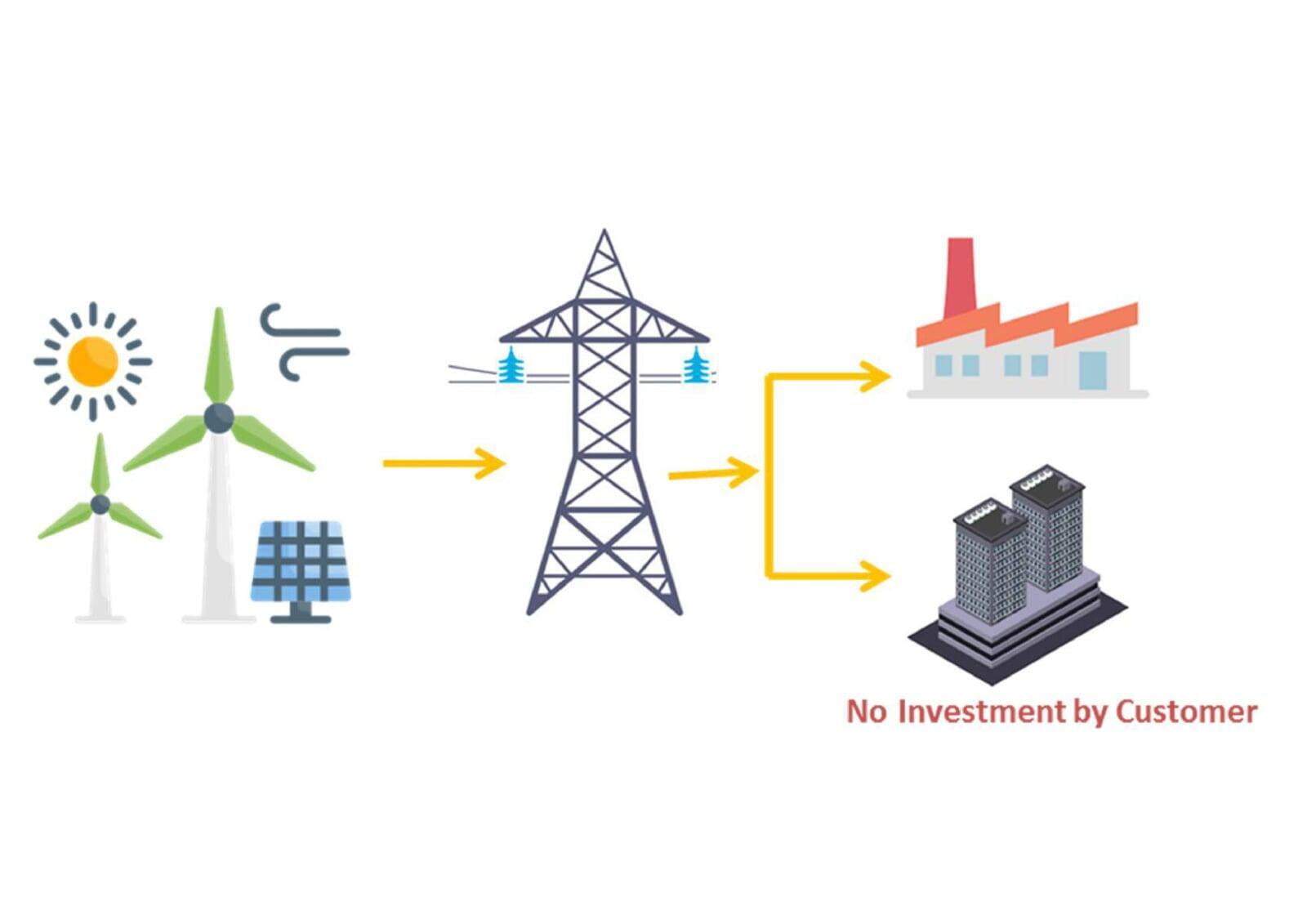
There are three types of Open Access in terms of duration. The period for Short Term Open Access (STOA) is from 3 months to three years. Medium Term Open Access (MTOA) period is from 3 years to 12 years whereas Long Term Open Access (LTOA) period lies from 12 years to 25 years.
The government of India has recently notified the green energy open access. The Electricity (Promoting Renewable Energy Through Green Energy Open Access (GEOA)) Rules, 2022 are explained below:
- As mentioned earlier, Open access was introduced by the Electricity Act, 2003 to promote competition in the market by providing a choice of suppliers to the consumers and the act enabled large power consumers having connected load > 1 MW to buy cost effective power from power purchasers. According to the new rules, the consumers having a load >100 kW can directly purchase electricity through Renewable Power Producers (RPP) rather than only depending on DISCOMs.
- The Rules also introduce the concept of a Uniform renewable Purchase Obligation (RPO) on all obligated entities in area of a distribution licensee. The mechanism for determination of the uniform RPOs will be provided.
Any consumer can opt to purchase renewable power:
• By Own Generation from RE sources
• By Open Access from directly Developers/ via trading licensee/via power markets
• By requisition from DISCOMs
• By consuming green energy from captive power plant
• By purchasing of REC (Renewable Energy Certificates)
• By purchasing green hydrogen
- A central nodal agency (CNA) will be established to act as a single window clearance system for processing green energy open access applications and the window for approval will be 15 days after submission. The CNA is supposed to prepare a common application format for the Green Energy Open Access within a period of 60days of commencement of these rules.
- There have been hindrances on the banking of green power by the Discoms, it has now been mandated that DISCOMs will provide the banking of green power. In order to boost the green hydrogen, the GOI has provided additional benefits in terms of removing the open access charges if the green energy is used to generate hydrogen.
Discoms generally charge about Rs. 2-4/kWh as cross-subsidy charge, additional surcharge, and standby charges. There is a cap now by MoP on these charges and there is no additional surcharge on the green power open access. There is going to be more transparency on these open access charges by the DISCOMs. - The concept of Green Certificates and Green Ratings have been introduced to incentivize adoption by facilitating transparency in ESG disclosures. DISCOMs will issue green certificates to such consumers purchasing green power above RPO limits. State government may introduce concept of rating or labeling for such consumers too based on percentage of green power purchase.
FAQ
FAQ
